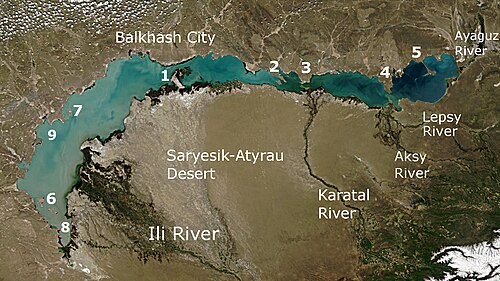Ecological Problems Of Kazakhstan Essay
Environmental issues in Kazakhstan The environment of Kazakhstan began to suffer serious harm during the Soviet period. The country now faces an urgent need to address the Soviet legacy of ecological mismanagement. Between 1949 and 1991 the Soviet government conducted about 70 percent of all of its nuclear testing in Kazakhstan, mostly in the north-eastern area near the city of Semipalatinsk (now Semey). Nearly 500 nuclear explosions occurred both above and below ground near Semipalatinsk, while more than 40 nuclear detonations occurred at other testing grounds in western Kazakhstan and in the Qyzylqum desert. More than 1 million of Kazakhstan’s inhabitants were exposed to dangerous levels of radiation because the Soviet government did not evacuate or even warn nearby populations. In the late 1980s Kazakhs held large demonstrations calling for an end to the nuclear testing, and in 1991 the government of Kazakhstan put a stop to the practice. However, the testing grounds, and perhaps even underground aquifers (water-bearing layers of rock, sand, or gravel), remain highly contaminated.
Pc optimizer pro crack keygen download. Home Ecological problems of kazakhstan essay argumentative Ecological problems of kazakhstan essay argumentative The dead poets society essay dailymotion essay describe your personality unique qualities essay sherlock holmes jeremy brett youtube, scholarship essay formatting reasons modern houses essay definition acquisition of language essay.
The Nevada-Semipalatinsk Organization, which led the campaign against nuclear testing during the 1980s, has turned its attention to teaching residents of polluted areas how to avoid nuclear contamination. One of every three children born in the Semipalatinsk region has mental or physical defects, and about half the population suffers from immune system deficiencies. Another ecological disaster area in Kazakhstan is the Aral Sea, which is split roughly in half between Kazakhstan and Uzbekistan. The Aral Sea has shrunk to less than half its former size since the early 1960s, when the Soviet government initiated a drive to increase cotton yields in the arid lands of Central Asia. Excessive irrigation substantially decreased inflow to the Aral, and the Aral’s shoreline began to recede rapidly.

This has caused severe environmental problems in the Aral Sea Basin, including the destruction of wildlife habitat as a result of desertification (a process whereby previously habitable or arable land becomes desert). The Aral Sea crisis is also associated with a number of health problems, including respiratory infections and parasitic diseases.
Efforts to address the crisis have focused on preventing further shrinkage of the Aral Sea, mainly because the damage is so severe that it is practically irreversible. Kazakhstan also faces the problem of urban pollution, particularly in its eastern cities, which receive harmful emissions from lead and zinc smelters, a uranium-processing mill, and other industries. In recent years, environmental activist groups in Kazakhstan have begun lobbying for tighter emission controls. Other environmental issues in Kazakhstan include soil pollution from the overuse of pesticides in agriculture and the increasingly polluted waters of the Caspian Sea.
Ecological Problems of Kazakhstan DECREASING THE DANGERS OF THE IMPACT OF LEAD ON CHILDREN IN THE REPUBLIC OF KAZAKHSTAN Tatyana SLAZHNEVA, doctor of medicine, professor, Deputy General Director of the National Healthy Lifestyle Center, Almaty, Kazakhstan. Andrei KORCHEVSKY, candidate of medicine, Executive Director of the Center for Healthcare and Environmental Design, Almaty, Kazakhstan.
Alexander MOKRYSHEV, candidate of technical sciences, assistant professor at the Almaty Institute of Power Engineering and Communications Almaty, Kazakhstan. Received in revised form July 8, 2004 Lead and its toxic compounds are dangerous environmental pollutants.